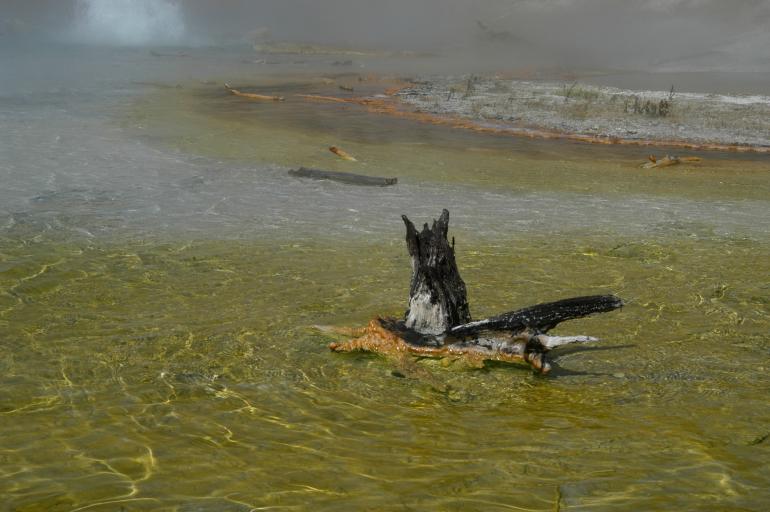Yellowstone's Natural Events
This fall, as visitors from around the world stopped to gawk at bison and ooh & ahh at Old Faithful, scientists scrambled to record some "unusual" geothermal events.
Steamboat Geyser in the Norris area erupted for the second time this year. The world’s tallest geyser, Steamboat pumped out three times its normal water volume at two times its normal pressure—pretty impressive for a spout that hadn’t vented in fifty years.
Adding Steamboat’s eruptions to other odd incidents, like some of the Park’s roads buckling and massive amounts of trout swimming belly-up in the Firehole and Gibbon Rivers, makes for a very atypical year. But even though these instances seem like record-setting events, Yellowstone geothermal expert Hank Heasler isn’t so sure.
According to Heasler, this strange stuff is probably all run-of-the-mill amidst Yellowstone’s 10,000 thermal features and 200,000-year geologic history—we just don’t have accurate records over a wide enough area and a long enough period of time to accurately interpret the phenomena. Scientists are like doctors who monitor the "pulse" of geothermal activity. "If a doctor took your pulse after you’d just sprinted somewhere," Heasler says, "it would seem abnormal, like the eruptions in Norris."
Now, with improving technology to monitor the Park’s pulse, scientists will be able to gather more data to find out what kind of a sprint caused Steamboat to erupt. In the meantime, you can check up on seismic activity (updated every fifteen minutes) at http://volcanoes.usgs.gov/yvolmonitoring.html.






